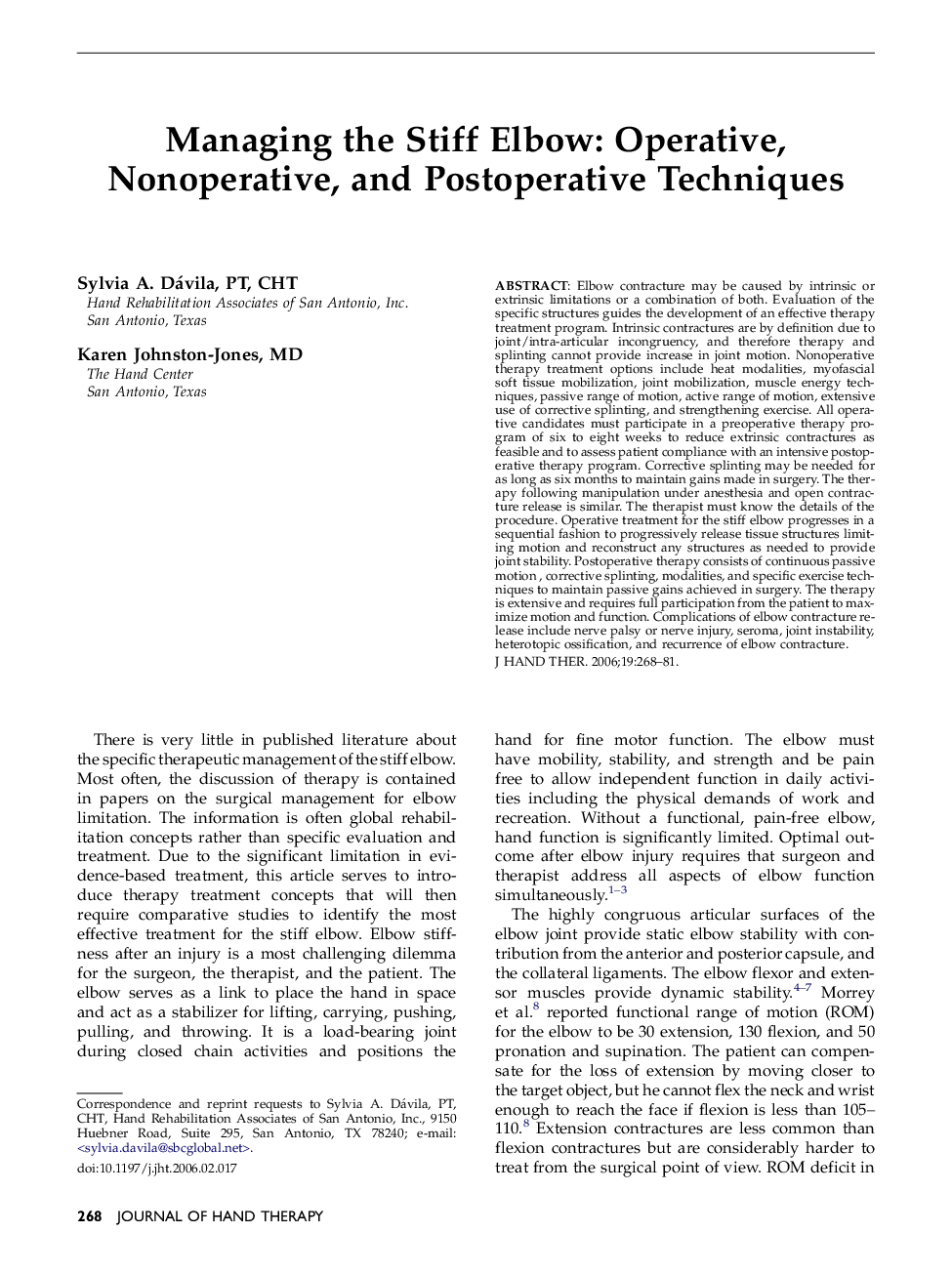| Article ID | Journal | Published Year | Pages | File Type |
|---|---|---|---|---|
| 2695361 | Journal of Hand Therapy | 2006 | 14 Pages |
Elbow contracture may be caused by intrinsic or extrinsic limitations or a combination of both. Evaluation of the specific structures guides the development of an effective therapy treatment program. Intrinsic contractures are by definition due to joint/intra-articular incongruency, and therefore therapy and splinting cannot provide increase in joint motion. Nonoperative therapy treatment options include heat modalities, myofascial soft tissue mobilization, joint mobilization, muscle energy techniques, passive range of motion, active range of motion, extensive use of corrective splinting, and strengthening exercise. All operative candidates must participate in a preoperative therapy program of six to eight weeks to reduce extrinsic contractures as feasible and to assess patient compliance with an intensive postoperative therapy program. Corrective splinting may be needed for as long as six months to maintain gains made in surgery. The therapy following manipulation under anesthesia and open contracture release is similar. The therapist must know the details of the procedure. Operative treatment for the stiff elbow progresses in a sequential fashion to progressively release tissue structures limiting motion and reconstruct any structures as needed to provide joint stability. Postoperative therapy consists of continuous passive motion , corrective splinting, modalities, and specific exercise techniques to maintain passive gains achieved in surgery. The therapy is extensive and requires full participation from the patient to maximize motion and function. Complications of elbow contracture release include nerve palsy or nerve injury, seroma, joint instability, heterotopic ossification, and recurrence of elbow contracture.
